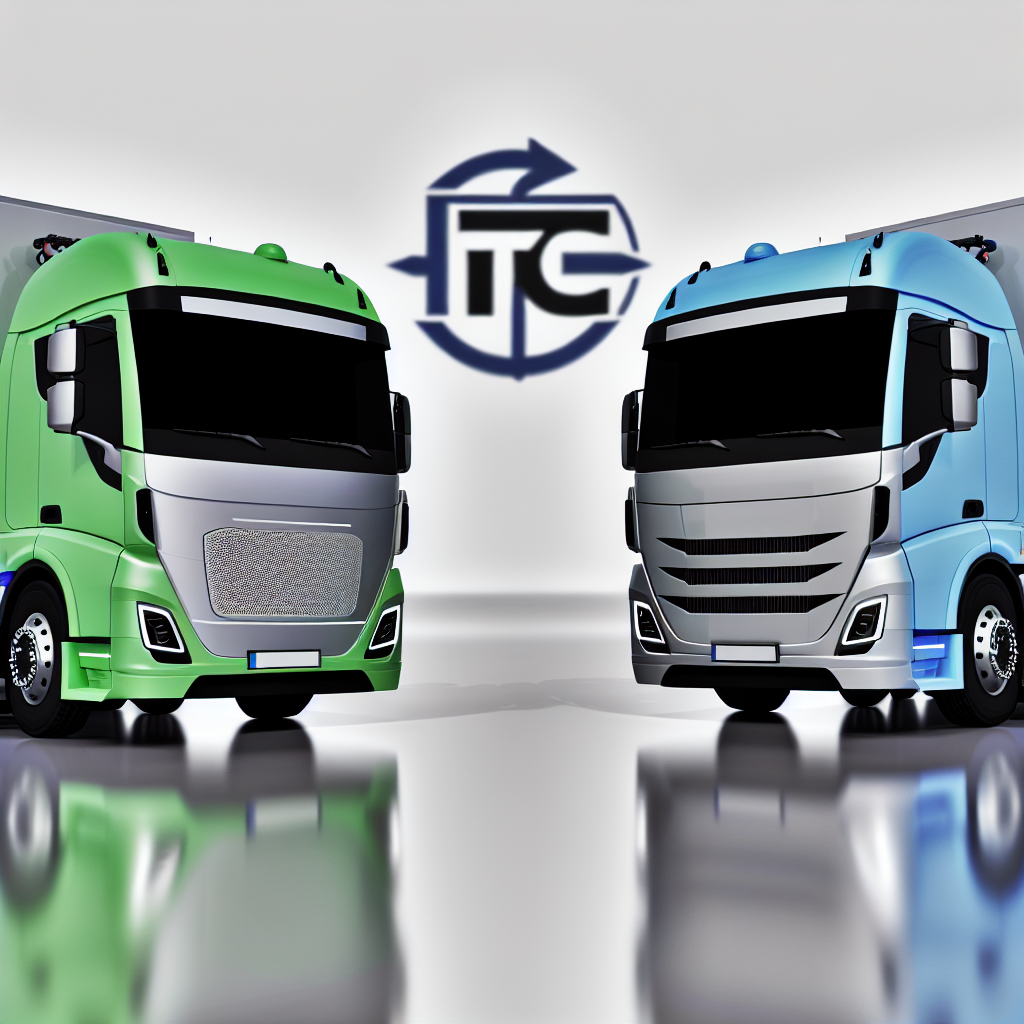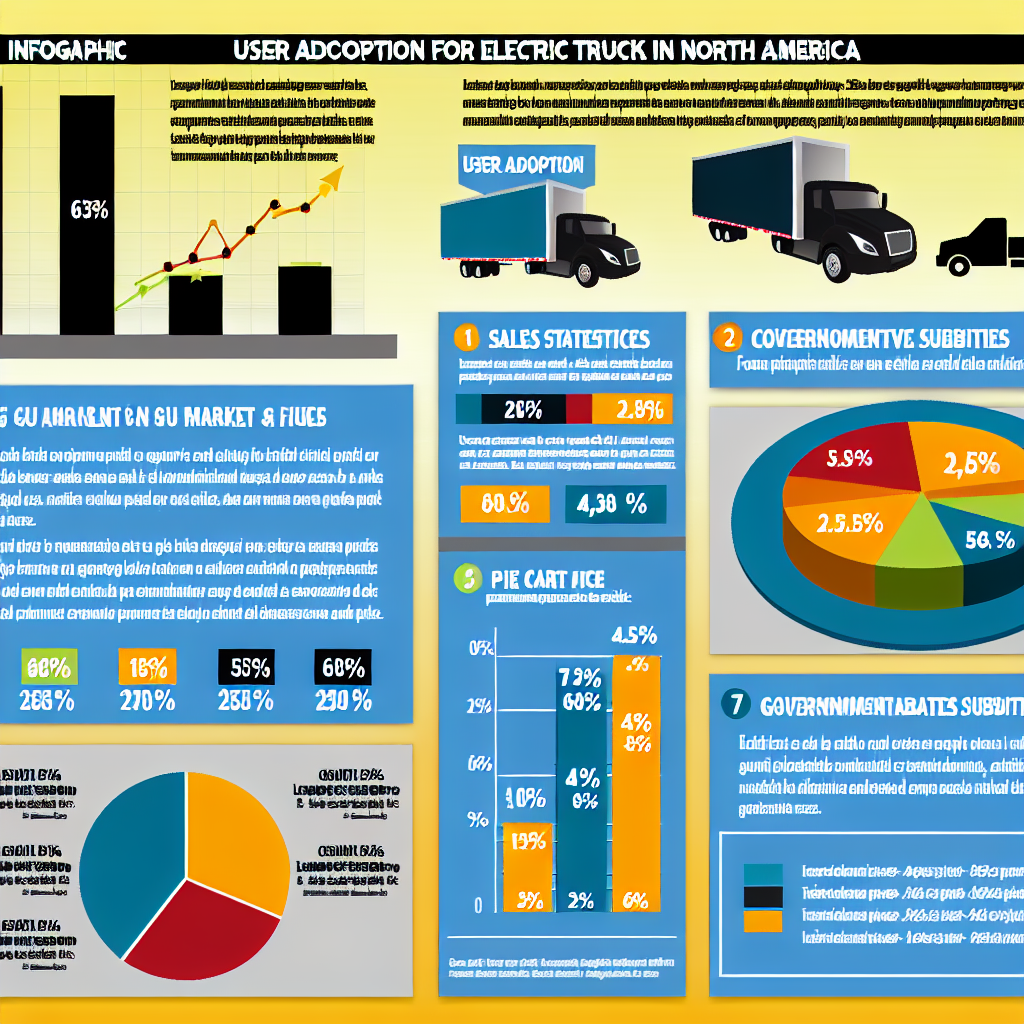Introduction
In an era where electric vehicles are rapidly transforming the transportation landscape, the merger between Workhorse Group and Motiv Electric Trucks has emerged as a pivotal development that promises to reshape the medium-duty truck market. This strategic alliance, valued at an impressive $105 million, not only consolidates the manufacturing capabilities of two industry frontrunners but also aims to enhance operational efficiencies and expand their market reach. The significance of this merger goes beyond mere financial figures; it plays a foundational role in addressing the increasing demand for sustainable transportation options.
As cities lean into greener practices and regulations push for reductions in carbon footprints, electric trucks are becoming essential in various sectors, particularly in the medium-duty segment, which alone represents a colossal market valued at around $23 billion. The Workhorse Group Motiv Electric Trucks merger positions the combined company to capitalize on this growth, ensuring that they are well-equipped to meet the evolving needs of their customers while simultaneously supporting environmental goals. Through expected synergies and a unified strategy, this merger stands to redefine how goods are transported, demonstrating a commitment to innovation and sustainability in the logistics industry.
As industry veterans Scott Griffith and Rick Dauch take the helm, all eyes will be on how this merger unfolds and its implications for the future of electric trucks in North America.
Detailed Market Analysis
The medium-duty electric truck market in North America is experiencing significant growth, driven by technological advancements, strategic mergers, and favorable market conditions.
Sales Growth and Market Expansion
In the second quarter of 2025, Workhorse Group reported a 573% year-over-year increase in electric vehicle sales, delivering a record 32 trucks and generating $5.7 million in revenue. This surge reflects the broader market trend, with electric trucks accounting for 20% of new medium-duty truck sales in Q2 2025, up from negligible levels in 2022. The North American electric truck market is projected to grow at a compound annual growth rate (CAGR) of 13.5% during the forecast period.
Technological Advancements
Innovations in battery technology and charging infrastructure are enhancing the appeal of electric trucks. For instance, new deployment models like swappable standardized battery modules, refillable in just five minutes, are improving vehicle uptime and operational efficiency. Additionally, the expansion of public charging stations, with over 84,000 across the U.S. and Canada as of early 2026, supports the growing adoption of electric trucks.
Competitive Landscape and Mergers
The merger between Workhorse Group and Motiv Electric Trucks, announced in August 2025, is set to create a leading medium-duty electric truck OEM in North America. The combined entity aims to leverage increased scale, an expanded product portfolio, and enhanced operational efficiencies to reduce unit costs and optimize total cost of ownership for customers. The merger is expected to close in the fourth quarter of 2025, with Motiv’s CEO, Scott Griffith, leading the combined company.
Future Projections
The medium-duty electric truck market is poised for continued growth, driven by stringent emission regulations, government incentives, and advancements in technology. The combined efforts of companies like Workhorse and Motiv are expected to accelerate the transition to electric vehicles, with the merged entity targeting the $23 billion medium-duty truck market.
In summary, the North American medium-duty electric truck market is on an upward trajectory, bolstered by technological innovations, strategic mergers, and supportive market dynamics.

Key Insights about the Merger
The merger between Workhorse Group and Motiv Electric Trucks presents several critical insights that highlight its potential impacts on the electric truck market. Here are the key points to consider:
- Cost Synergies: The merger is anticipated to generate at least $20 million in cost savings by 2026. This reduction will come from economies of scale, streamlined operations, and shared resources between the two companies, ultimately enhancing financial viability.
- Market Positioning: By combining their efforts, the newly formed entity is strategically positioned to capture a larger share of the growing $23 billion medium-duty truck market. This consolidation strengthens their competitive edge against existing players while facilitating customer base expansion across the North American market.
- Operational Scale Improvements: The merger aims to improve operational efficiencies significantly. A larger operational scale will allow for better utilization of manufacturing facilities, advanced research and development capabilities, and enhanced supply chain logistics, all contributing to faster market delivery.
- Leadership Transition: Leadership from both companies, including Scott Griffith and Rick Dauch, will harness their expertise to guide the new entity. This effective leadership will be vital in navigating the complexities of the merged operations and aligning strategic goals.
- Simplified Capital Structure: The transaction will also simplify the capital structure of the combined company, allowing for more straightforward financial management and the ability to attract future investments. This is critical as the market for electric trucks continues to evolve.
Through this merger, Workhorse Group and Motiv Electric Trucks are not just creating a larger company; they are setting the stage for a more sustainable and innovative future in the electric truck industry, reinforcing the importance of collaboration in meeting customer demands and environmental challenges.
Financial Benefits of the Merger
The merger between Workhorse Group and Motiv Electric Trucks is poised to yield significant financial benefits, prominently featuring projected cost synergies of approximately $20 million. Such synergies are essential for enhancing operational efficiencies and ultimately increasing shareholder value. By joining forces, the two companies can leverage their combined assets to optimize their operations and streamline the supply chain, allowing for a more competitive edge in the medium-duty electric truck market.
According to recent insights, mergers in the truck industry typically target the achievement of cost synergies through vertical integration and operational efficiencies. For example, similar mergers have shown potential annual run-rate synergies projected between $25 and $30 million in the second year, underscoring the value that such strategic consolidations can bring. While Workhorse and Motiv anticipate $20 million in cost synergies, this projection aligns closely with industry norms where successful mergers often capture 15-25% of the target company’s valuation in cost savings.
At the same time, the total valuation of the combined entity stands at $105 million. This valuation provides a robust foundation for the anticipated synergies, which represent about 19% of this figure—a promising start for unlocking shareholder value. It’s worth noting that industry research suggests careful and meticulous execution is necessary to bring these synergies to fruition. Approximately 60% of mergers achieve their planned cost synergies, illustrating the importance of thorough due diligence in realizing financial objectives.
As Scott Griffith, CEO of Workhorse, noted, “This merger positions the company for growth in the $23 billion medium-duty truck segment,” reinforcing the strategic rationale behind this consolidation.
The anticipated enhancements in operational scale, simplified capital structure, and expanded customer base are integral to the financial benefits that this merger aims to achieve, setting the stage for a brighter future in the electric truck market.
| Company | Manufacturing Capabilities | Market Reach | Product Portfolio |
|---|---|---|---|
| Workhorse Group | Advanced electric vehicle manufacturing technology with focus on medium-duty trucks. | Stronger presence in North America, with established dealer networks. | Specializes in Class 4-6 electric trucks. |
| Motiv Electric Trucks | Expertise in electric drivetrain solutions and customization options. | Growing footprint in urban centers and commercial applications. | Offers a wide range of Class 4-6 electric trucks suitable for various applications. |
Leadership Transition
The merger of Workhorse Group and Motiv Electric Trucks marks a significant leadership transition that is crucial for the seamless integration of operations and the stabilization of the newly formed entity. At the forefront of this transition are Scott Griffith, the CEO of Workhorse Group, and Rick Dauch, who is set to play a pivotal role in guiding the combined company. Their respective backgrounds and expertise are expected to bolster the operational capabilities of the merger while establishing a stable foundation for future growth.
Scott Griffith brings a wealth of experience in the electric vehicle industry, having led Workhorse Group through various stages of development. His vision for innovation and operational efficiency will be instrumental in steering the merged entity toward achieving the projected cost synergies and maximizing market potential. Under his leadership, the merged company aims to focus on enhancing manufacturing capabilities and leveraging shared resources.
Rick Dauch, with his extensive experience in organizational management and strategic operations, complements Griffith’s approach. Dauch’s familiarity with the intricacies of corporate merging allows him to navigate cultural integration challenges effectively. His leadership role will be fundamental in harmonizing the disparate corporate cultures of Workhorse and Motiv, fostering collaboration among employees to build a unified workforce.
This leadership transition is designed not only to strengthen the operational scale of the new entity but also to ensure stability during this crucial integration phase. By prioritizing communication, transparency, and teamwork, Griffith and Dauch aim to alleviate employee uncertainties that often accompany such transitions, thus maintaining morale and productivity. Their joint emphasis on strategic goal alignment will be essential for meeting the objectives set forth in the merger, paving the way for a more robust presence in the medium-duty electric truck market. Overall, their leadership will be pivotal in realizing the full potential of this merger, ultimately benefiting stakeholders and customers alike.
As Scott Griffith, CEO of Workhorse, noted, “This merger positions the company for growth in the $23 billion medium-duty truck segment,” emphasizing the strategic importance of this merger. This significant consolidation not only enhances operational efficiencies but also unlocks new market opportunities within a rapidly expanding sector.
User Adoption Data for Electric Trucks
As of October 31, 2025, the landscape of electric truck adoption in North America is evolving significantly, marked by distinct trends, statistics, and key market insights despite existing challenges. Here is a summary of the current user adoption data for electric trucks:
Sales Growth and Adoption Rates
- Market Size and Growth: The North American electric truck market is valued at approximately USD 1.2 billion in 2023, with the United States accounting for around 73% of this market share. Projections suggest robust growth, with expectations for the market to balloon to USD 6,652.6 million by 2033, indicating a compound annual growth rate (CAGR) of 25.6% from 2025 to 2033 (GMI Insights).
- Electric Vehicle Sales Trends: In 2024, electric vehicle sales in the U.S. rose by 8.8%, reaching nearly 1.3 million units. However, the adoption of electric trucks remains comparatively slow, with electric medium- and heavy-duty trucks comprising less than 0.5% of total sales in 2024 (IEA).
Impact of Incentives
- Government Policies: Federal and state incentives play a crucial role in boosting electric truck adoption. For instance, California has implemented the Advanced Clean Fleets Regulation, mandating that 50% of heavy-duty vehicle sales for public fleets be zero-emission by 2024, ramping up to 100% by 2027 (Mordor Intelligence).
- Subsidy Reductions: Recent legislative changes have cast a shadow over future electric truck sales, notably the termination of up to $7,500 in tax incentives for new EV purchases effective September 30, 2025. This development raises concerns of a potential spike in sales followed by a downturn as government incentives recede (Axios).
Comparison to Traditional Trucks
- Operational Costs: Electric trucks present a compelling financial advantage over their diesel counterparts. Electrified medium and long-haul trucks can achieve a total cost of ownership that is 13% lower than that of traditional diesel trucks, with innovations potentially lowering these costs by up to 50% by 2030 (Stanley Engineered Fastening).
- Performance Concerns: Despite the cost advantages, challenges related to performance—such as towing capacity and driving range—have hindered broader adoption. This was highlighted by Stellantis’s decision to cease the development of its electric Ram 1500 pickup, which reflected declining demand for full-size battery electric vehicles in North America (Reuters).
Market Dynamics
- Regional Differences: The rate of electric truck adoption varies significantly by region. In the first half of 2025, zero-emission truck adoption in the U.S. was reported to be approximately one-tenth that of 2024, revealing challenges due to supply chain constraints, regulatory issues, and lackluster demand (BBHub).
- Infrastructure and Cost Barriers: Growth in public charging infrastructure is essential, but it is currently lagging behind vehicle sales. The price gap between electric and internal combustion engine models remains a significant barrier, particularly in heavier weight classes (Automotive Fleet).
Conclusion
In summary, while the North American electric truck market demonstrates promising growth potential, current adoption rates are limited by various factors, including changes in government incentives, infrastructure development, and consumer perceptions. The synergy of government policies, technological advancements, and market dynamics will be vital in determining the future growth trajectory of electric truck adoption in the region.


Detailed Market Analysis
The medium-duty electric truck market in North America is experiencing significant growth due to technological advancements and strategic partnerships, reflecting broader electric vehicle market trends.
Sales Growth and Market Expansion
In the second quarter of 2025, Workhorse Group reported a 573% year-over-year increase in electric vehicle sales, delivering a record 32 trucks and generating $5.7 million in revenue. This surge reflects the broader market trend, with electric trucks accounting for 20% of new medium-duty truck sales in Q2 2025, which is a substantial improvement from negligible levels in 2022. The North American electric truck market is projected to grow at a compound annual growth rate (CAGR) of 13.5% during the forecast period, driven by the increasing shift towards sustainable transportation.
Technological Advancements
Innovations in battery technology and charging infrastructure are enhancing the appeal of electric trucks. For instance, new deployment models like swappable standardized battery modules, refillable in just five minutes, are improving vehicle uptime and operational efficiency. Additionally, the expansion of public charging stations, with over 84,000 across the U.S. and Canada as of early 2026, supports the growing adoption of electric trucks.
Competitive Landscape and Mergers
The merger between Workhorse Group and Motiv Electric Trucks, announced in August 2025, is set to create a leading medium-duty electric truck OEM in North America. The combined entity aims to leverage increased scale, an expanded product portfolio, and enhanced operational efficiencies to reduce unit costs and optimize total cost of ownership for customers. This initiative aligns perfectly with market evolution toward electric vehicles and sustainable transportation solutions.
Future Projections
The medium-duty electric truck market is poised for continued growth, driven by stringent emission regulations, government incentives, and advancements in technology. The combined efforts of companies like Workhorse and Motiv are expected to accelerate the transition to electric vehicles, targeting the growing $23 billion medium-duty truck market.
In summary, the North American medium-duty electric truck market is on an upward trajectory, bolstered by technological innovations and strategic mergers that are creating a more sustainable future.
Transition between Financial Benefits and Strengths Comparison
The merger between Workhorse Group and Motiv Electric Trucks not only promises substantial financial benefits, including projected cost synergies of around $20 million but also highlights the inherent strengths of both companies that will be amplified through this strategic alliance. These financial advantages are set to enhance operational efficiencies, allowing the merged entity to leverage greater scale and innovation in its operations. As these companies consolidate their manufacturing capabilities, they will optimize their resource utilization, ultimately driving down costs and improving output.
Furthermore, the reinforced market positioning and expanded product offerings resulting from this merger will unlock even more value, enabling the company to effectively compete within the bustling $23 billion medium-duty truck market. With the combination of Workhorse’s advanced electric vehicle technology and Motiv’s innovative drivetrain solutions, the new entity is well-poised to fulfill increasing customer demands while meeting environmental standards.
Thus, as we shift our focus towards the strengths comparison, it becomes evident that the financial benefits are not merely numerical; they pave the way for a more robust competitive edge, increasing the organization’s ability to innovate, respond to market needs, and fulfill customer expectations. Let us delve deeper into the strengths of both companies in the next section, illustrating how this merger sets the foundation for a promising future in electric trucking.


